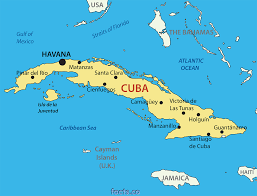Lisa Yun, in her final chapter on the “Afro-Chinese author,” employs archival, textual, and visual methods to examine Antonio Chuffat’s biographical narrative. The narrative, which she describes as an “autobiography within a biography of the Chinese community,” presents a “critical narrative of liberalism” (Yun 187). Yun, who speaks from a Cuban context, corrects Lesser’s emblematically liberal historiography of Afro-Asian labor, slavery, and entrepreneurship in Brazil. Unlike Lesser, Yun adopts Chuffat’s narrative to highlight the overlaps between black and Asian racial formations emergent from European colonial governance. Moreover, she emphasizes the “ambivalent yet necessary” linkages between “free” and contracted labor, challenging teleological notions of progressive temporality. Most interestingly, Yun mobilizes Chuffat’s biography to highlight Chinese coolies as “creative agents of cultural forms and hybridizations” (185), highlighting their oppositional consciousness. Laudable for its nuances, Yun’s study not only underscores Chuffat’s antiracist, oppositional consciousness, but his rearticulation of anti-indigeneity discourses (209) and overall masculine posture (227). She also suggests that Chuffat’s subjection as a racialized subject may have compelled him to regurgitate discourses about Asians as docile subjects with aspirations to whiteness (199). Thus, Yun successfully portrays Chuffat as an unstable, contradictory, layered subject who inconsistently resisted, and sometimes reproduced, the conditions of his own racial subordination.
Even in speaking of Chuffat’s masculine voice as a biographer, however, Yun observes that the appended photographs present a visual counter-narrative to the text itself. While Chuffat rarely mentions women in his writing, Yun observes, images of women proliferate in his appendix and captions. In studying this inconsistency, Yun argues that the captions contained “very respectful,” even admiring descriptions of their female subjects. For Yun, this portrayal suggests “possibilities for the reinvention of women’s biographies and roles,” “or at least . . . the social valuing of women as crucial to the building of immigrant society” (227). As interesting as I find this contradiction in Chuffat’s text, I question whether the laudatory language ascribed to female subjects in the appendix necessary “reinvents women’s biographies and roles.” After all, Yun herself notes that the photographs position women as “symbols of class privilege . . . via the institution of heterosexual marriage, familial lineage, children, and property,” (227) underlining the primarily economic, heteropatriarchal value of these subjects. As such, I doubt that the sheer inclusion and affirmation of female subjects in these photographs necessarily points to Chuffat’s “valuing” of women. Moreover, I am not entirely persuaded that his female subjects expressed true “independence,” (227) especially given that their accomplishments were designed to prime them for marriage. In other words, female subjects in these narratives seem only as important as their lines of kinship: to men, and to children. Yun attempts to offer evidence to the contrary, noting, for instance, the elevated status of young girls at a time when children themselves were scarce. However, these examples seem only to betray a nationalist emphasis on reproduction, wherein children symbolize the future of the family’s—and metaphorically, the nation’s—genealogy.
[map of Cuba attached]
